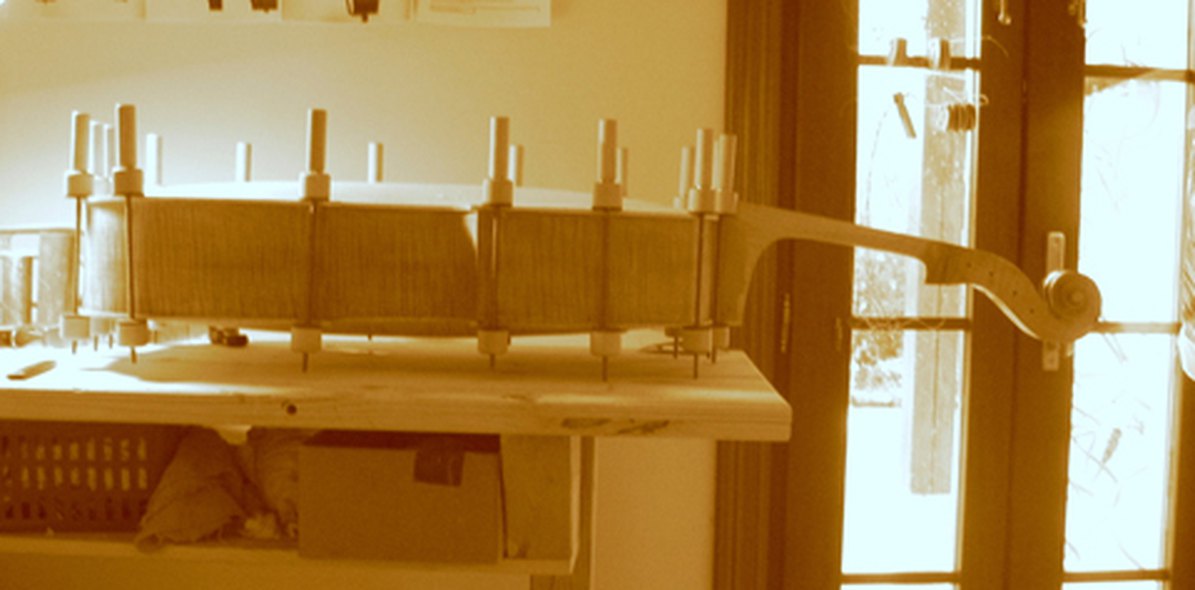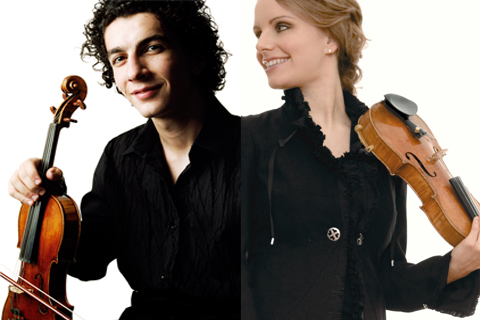
Stadivari, Guarneri, Guadagnini & Co. Why are they still that special?
What makes a good violin, cello or viola? What makes a Stradivari or a Guadagnini that special? Who better than a luthier could answer these questions? We asked the American luthier Daniel Hoffman!
Could you tell us, in a few words, what a Luthier does and why you chose this job?
I sometimes say that my job is to find the TONE in each piece of wood, I carve away what doesn´t have any music in it and keep the rest. In 1983 I was a guitar player and a woodworker and one night I began to look at my guitar, not as a musical instrument but as woodwork. It was an immediate attraction. And then in 1994, I happened upon the Biddolph/Pollens exhibit of Guarneri del Gesú at the Metropolitan Museum in New York. I walked in as an established guitarmaker and walked out as an unknown violinmaker.. To see 23 Del Gesú´s in one room in all of their ragged and florescent glory left me stunned. My nose was 2 inches away from the Cannon and I swear I could feel Paganini breathing down my neck.
What makes a good instrument?
Wood choice, archings, varnish, graduations (thicknesses) and Set-Up (Bridge, Tailpiece, Fingerboard etc .) in exactly that order of importance. Real instruments are composed... just like symphonies... the result of literally hundreds of thousands of decisions, large and small.
How long does it take you to create an instrument?
I will spend months working out the concept of an instrument in my thoughts, what I want to achieve ...and when the vision is as clear as glass I stop thinking and just do it! A violin can be "in the white" in less than two weeks, a cello in a month... After that, of course, the varnish setting and curing can take many months. And then I complicate things for myself because I make my own fittings and tools as well... all part of the process of composing.

Why are Stradivari or Guarneri (or other) instruments, which today are more than 250 years-old, still that good?
I am convinced that what makes the instruments from 1550-1750 so special is the way the wood was harvested and cured by the wood merchants who were supplying the needs of the shipbuilding industry.
Equally, too much attention cannot be paid to the "ground" (prevarnishing treatment) and varnishes used by the baroque artisans up until the middle of the 18th Century when the classic slow drying oil varnishes were abandoned in favor of newer and faster alcohol based varnishes. Traditional oil varnishes harden and cure slowly over many years as the wood fibers age and season ...all in a very symbiotic fashion. It wasn´t a "secret", it was a tradition that was left behind and very quickly forgotten by the advancing Industrial Revolution.
Are they indeed better than instruments build nowadays?
The Stradivari's, Guarneri's, Goffrillers, Da Salo's, and Montagnana's are different, unique examples of genius from another age. At the same time, most are understandably "tired" after 300 years of use. So I study the techniques, proceedures and tools these makers followed with the aim of duplicating the character of the masterpieces ...using the past to create a future so to speak. Contemporary instruments made with an understanding and shared vision of the baroque makers can and do sound equally satisfying as the masterworks of Cremona, Brescia, and Venice.

The following musicians all play on ancient instruments:
- Frank Peter Zimmermann : Stradivari "Lady Inchiquin" 1711
- Gautier Capuçon : Matteo Goffriller 1701
- Truls Mørk : Domenico Montagnana "Esquire" 1723
- Sergey Khachatryan : Guarneri del Gesù "Ysaÿe" 1740
- Julia Fischer : Giovanni Battista Guadagnini 1742
Within the next weeks, Daniel will document the whole process of creation of a cello for us, take pics and give us explanations on what he is doing to create that instruments. We are looking forward to reading this. And many thanks to Daniel who helps us to discover this enthralling profession !
Didier





